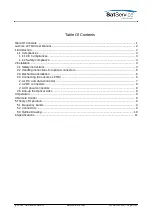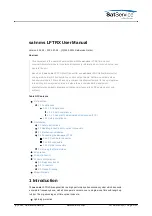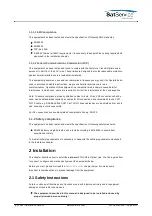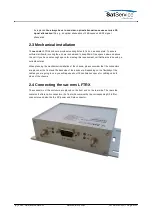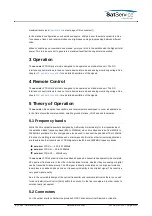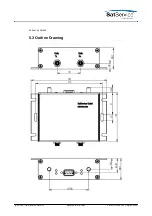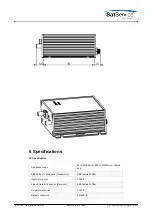
maximum levels (see
Specifications
on last page of this document)!
In the standard configuration you should have approx. 4dB gain over the whole optical link. Due
to variance of laser- and receive-diodes you might have some gain-spreading between different
links.
When connecting an occasional use antenna, point your dish to the satellite with the highest total
power. This is to ensure not to generate a maximum level fault during normal operation.
The sat-nms LFTRX Optical Link is designed to be operated as stand-alone unit. The DC-
Interface connector allows to read out some basic alarm and and analog monitoring voltage. See
chapter
DC and data connector
for a detailed describtion of the signals.
The sat-nms LFTRX Optical Link is designed to be operated as stand-alone unit. The DC-
Interface connector allows to read out some basic alarm and and analog monitoring voltage. See
chapter
DC and data connector
for a detailed describtion of the signals.
The sat-nms L-Band optical transmitters and receivers were developed to cover all applications
in the field of satellite communication, satellite ground stations, VSAT and cable networks.
While the fibre optical links where designed by SatService GmbH mainly for the transmission of
the satellite L-Band frequency band (950 to 2150MHz) also a broadband version from 50MHz to
2150MHz is available. So this link type can also be used to transmit the traditional 70 or 140MHz
IF bands of satellite ground stations and a microwave link. But also other terrestrial applications
are feasible like the transmission of GSM signals in the 800 and 1800MHz frequency bands.
sat-nms LFTRX-L --- 950 to 2150MHz
sat-nms LFTRX-B --- 50 to 2150MHz
sat-nms LFTRX-10 --- 10MHz only
The sat-nms LFTRX optical link is a broadband device and transmits transparently the complete
RF spectrum from one site to the other. All modulation formats, whether they are analog or digital,
can be transmitted transparently. The RF signal is directly modulated on to a high performance
laser diode and adds no phase noise or frequency instability to the original signal. The result is a
very good signal quality.
Due to the very stable design of the optical transmitter and receiver electronics there is no need
for an Automatic Gain Control (AGC) within the circuits. So the link is compared to other vendor's
solution really transparent.
For the optical interface SatService provides FC/APC connectors from Diamond or Huber &
(C) 2021, SatService GmbH
www.satnms.com
LFTRX-UM-2107 Page 9/12


